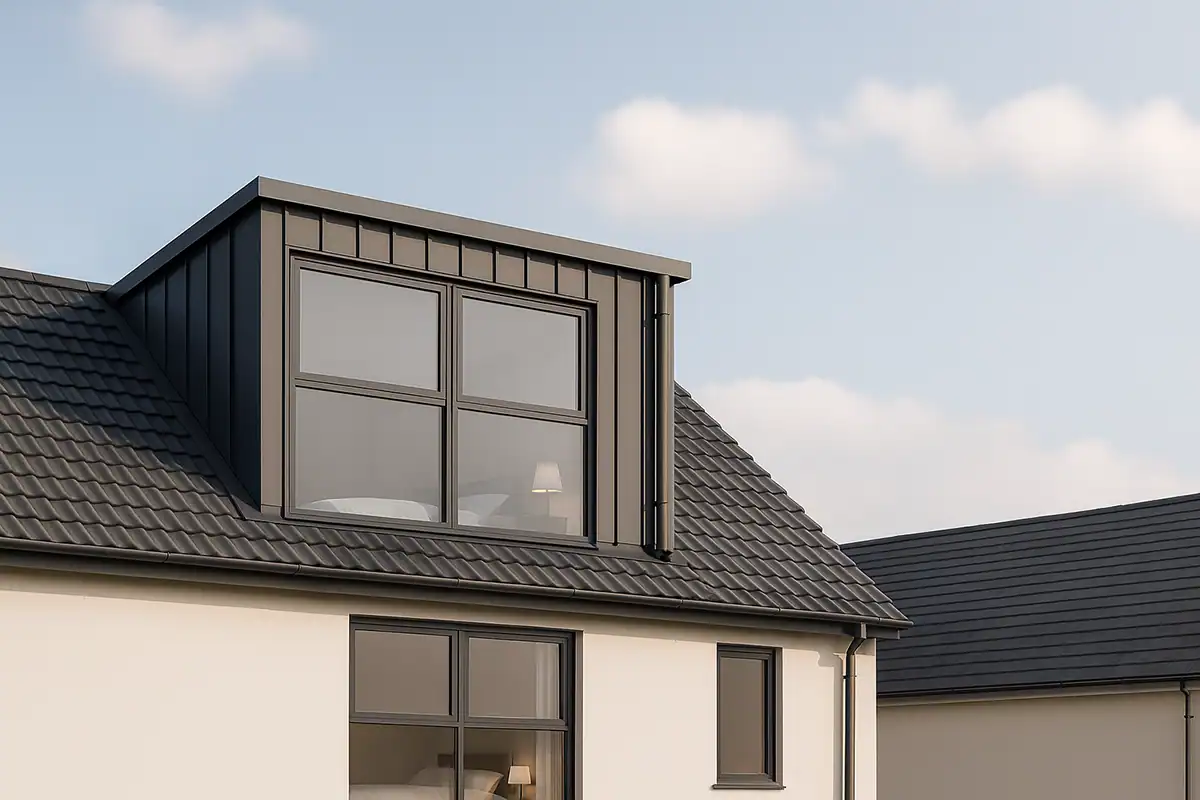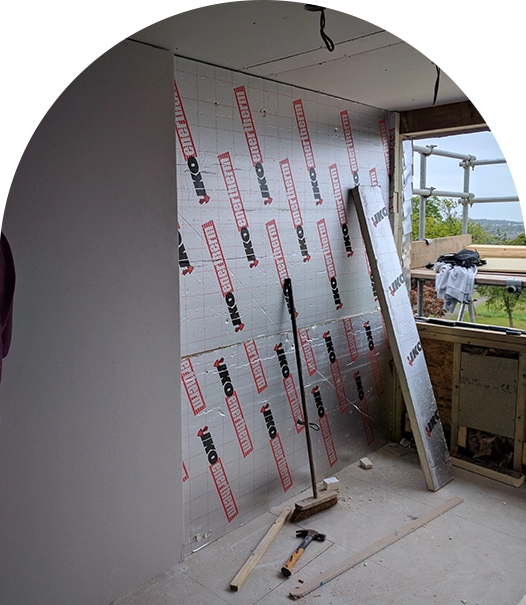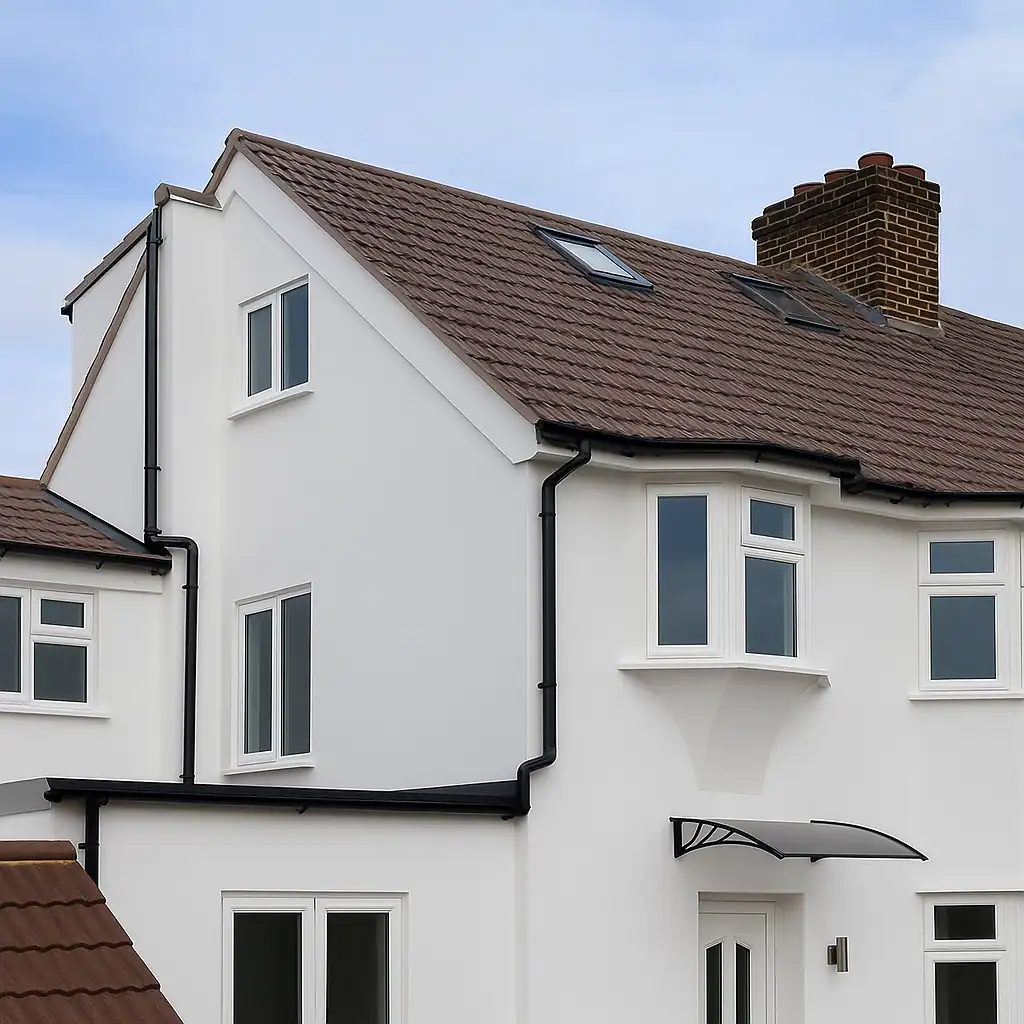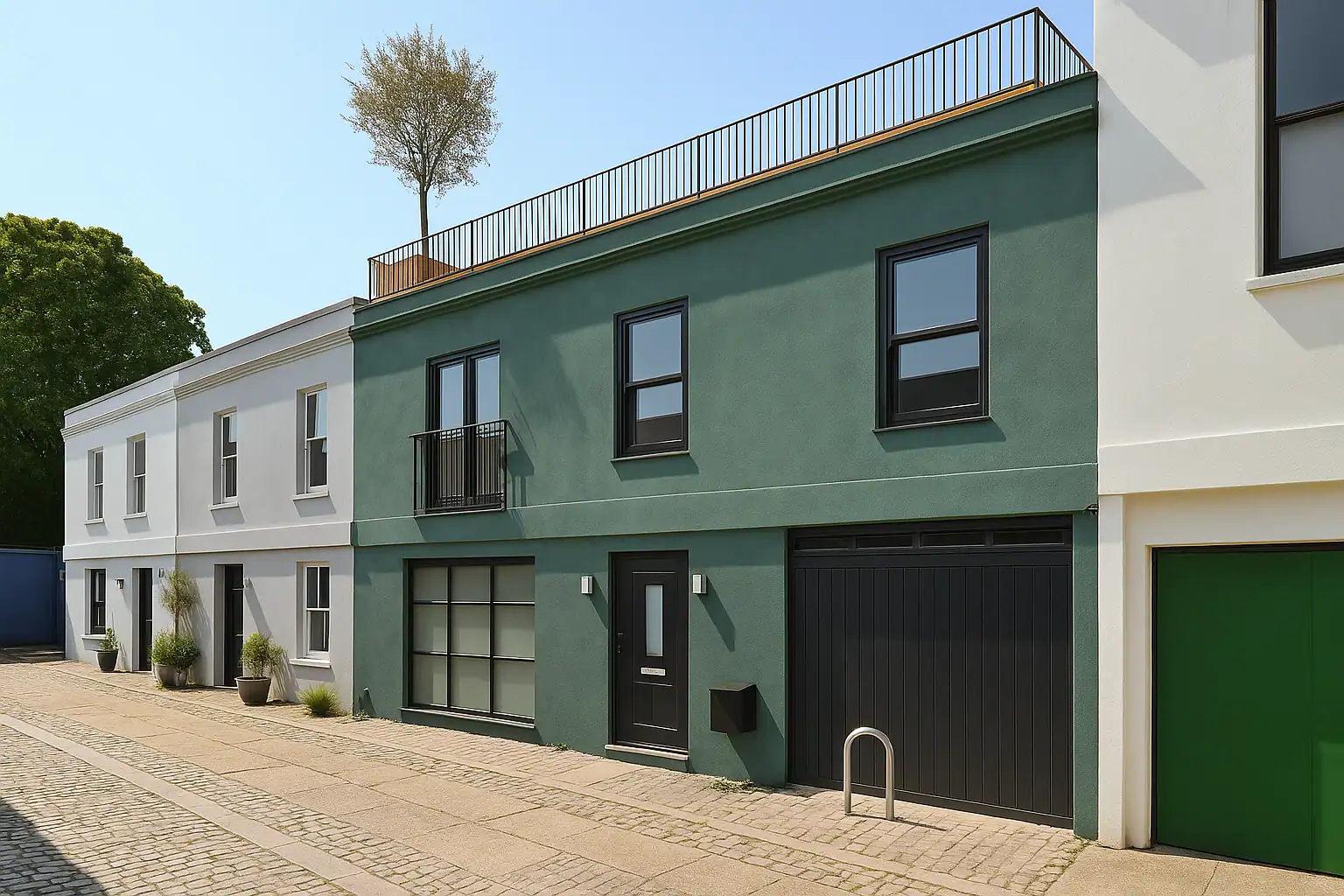Conversion with a Restricted Roof: Overcoming Height Challenges
A conversion with a restricted roof presents unique challenges. These require specialized approaches. Successfully managing restricted roof height involves both structural solutions and creative design. This maximizes the potential of your loft space.
Floor joists modifications can help create additional height. You do this by adjusting the structural framework. Sometimes lowering the ceiling joists to the bottom of the existing structure provides the extra centimeters needed. This helps create a successful conversion.
Building regulations for a loft conversion must still be met. This applies regardless of height restrictions. Regulations for a loft conversion cover structural safety, fire protection, and thermal performance. All of these apply to low ceiling projects.
Specialist expertise becomes essential when dealing with challenging roof situations. A specialist loft conversion company understands how to navigate height restrictions. They ensure full compliance with all requirements.
Specialist expertise becomes essential when dealing with challenging low roof situations. A specialist loft conversion company understands how to navigate height restrictions while ensuring full compliance with all requirements.
Lowering Heights: Alternative Solutions for Restricted Roof Height
Lowering heights in rooms below your loft can create the additional clearance needed. This creates a successful conversion. This approach involves modifying the ceilings of the rooms below. This effectively raises your loft floor level.
Structural considerations for this approach require careful planning. You need to ensure that rooms below maintain adequate ceiling height. At the same time, you gain precious space above. Most rooms can accommodate some height reduction without feeling cramped.
Service relocation becomes necessary when you lower the ceilings. Electrical wiring, plumbing, and heating systems may need rerouting. This accommodates the new ceiling level.
Cost implications should be factored into your planning. While this approach adds to the loft conversion cost, it can be more economical than major roof alterations. This helps achieve the required clearance.
Loft Conversion Cost: Planning Your Budget for Low Ceiling Solutions
The loft conversion cost for low ceiling projects typically exceeds standard conversions. This is due to additional structural work required. Understanding cost implications helps you make informed decisions about your conversion approach.
Type of conversion impact on cost varies significantly. A simple dormer loft conversion may cost less than a full mansard conversion. But both represent substantial investments. These can increase your property value significantly.
Structural work expenses form a major part of the overall cost. Modifications to floor joists, structures, and roof elements require skilled craftspeople. They also require quality materials to ensure long-term success.
Planning permission costs may apply to certain low ceiling solutions. Some approaches to creating additional clearance require formal planning approval. This adds to the overall project expense.
Loft Conversion Possible: Assessing Your Space
Determining if a loft conversion is possible depends on several key factors. Height is the most critical consideration for low situations.
Measuring your space accurately helps determine what’s achievable. Measure from existing floor joists to the highest point of your roof structure. This helps you understand your starting point for creating adequate clearance.
Professional assessment by experts can identify solutions you might not have considered. They can evaluate whether your traditional loft can be successfully converted. They recommend the most cost-effective approach.
Alternative uses might be possible even if full height isn’t achievable. Sometimes creating a small home office or storage area works better. This is better than trying to achieve full room height throughout the space.
Ceiling Height: Maximizing Your Available Space
Ceiling height directly impacts how you can use your converted loft space. Working with limited height requires strategic planning. This creates functional areas that feel comfortable and spacious.
Zoned approaches work well in low ceiling situations. You might achieve full ceiling height in key areas. At the same time, you accept lower heights for specific functions like storage or sleeping areas.
Floor space optimization helps compensate for limited height. Maximizing usable floor area can make a lower ceiling feel less restrictive. It becomes more functional for daily use.
Design strategies can make low ceilings feel higher. Light colors, strategic lighting, and clever furniture placement help. These create the illusion of greater height and space.
Planning permission for a loft conversion requirements vary depending on the approach you take to solve low ceiling challenges. Understanding when permission is needed helps you plan your project timeline and budget accordingly.
Permitted development rights may apply to some smaller conversions, but these rights are often limited when dealing with low roofs that require significant structural changes.
Roof alterations that change the external appearance typically require planning permission. This includes raising roof height, adding large dormers, or installing mansard conversions.
Local planning policies influence what’s possible in your area. Some locations have specific restrictions on roof modifications, while others may be more accommodating to creative solutions.
Small Loft Conversions: Making the Most of Limited Space
Small loft conversions require innovative approaches to create functional living areas within tight constraints. Every design decision matters when working with limited floor space and ceiling height.
Multi-functional design allows small spaces to serve multiple purposes. Your loft room could function as a home office during the day and guest bedroom at night, maximizing the value of your converted area.
Built-in solutions make efficient use of available space. Custom storage, integrated desks, and fold-away furniture help small loft conversions feel larger and more organized.
Storage integration utilizes areas where full head height isn’t available. Under-eaves storage and built-in wardrobes make productive use of spaces that can’t accommodate normal activities.
Transform Your Loft: Professional Solutions
To transform your loft successfully, especially when dealing with low ceiling challenges, professional guidance ensures you achieve the best possible result within your constraints and budget.
Comprehensive planning considers all aspects of your conversion from structural requirements to design optimization. Our Loft Conversion drawings London service ensures no opportunities are missed for maximizing your space through detailed architectural plans.
Expert execution by experienced professionals ensures quality results that comply with all regulations. They understand the complexities of working with limited head height and can deliver solutions that maximize your investment.
Long-term value comes from choosing the right approach for your specific situation. A well-planned conversion can significantly increase your property value while providing valuable additional living space.
A loft conversion can increase your home’s value substantially, even when working with challenging low ceiling constraints. The key is understanding what’s possible and choosing solutions that work within your specific limitations while meeting all necessary requirements. Minimum Height for a Loft Conversion: Understanding Head Height Requirements
The minimum height for a loft conversion is crucial for creating usable living space. While UK building regulations don’t specify exact room heights, the widely accepted standard is the height requirement of 2.2 metres for comfortable use. This head height allows for proper insulation installation and ensures you have enough headroom for daily activities.
The only legal minimum is 2 metres of head clearance on staircases. However, 1.9m is considered the absolute minimum for basic functionality. Any lower and you’ll struggle to install standard doors or use the space as a habitable loft room.
When measuring your existing space, remember you’ll lose height for floor construction and ceiling finishes. A traditional loft typically needs 250-300mm deducted from raw measurements to account for the new floor and ceiling treatments.
Height for a Loft: Creating More Head Height in Small Loft Conversions
The height for a loft conversion determines what’s possible in your space. Small loft conversions with limited head height require innovative solutions to create functional living areas.
Dormer loft conversion solutions work excellently for low ceiling challenges. A dormer loft extends your roof plane vertically, creating additional floor height and providing enough headroom for comfortable use. For properties with hipped roofs, a hip-to-gable loft conversion can dramatically increase your available space and solve height restrictions.
Mansard loft conversion offers another solution for severe height restrictions. This involves replacing your existing roof slope with a near-vertical wall, dramatically increasing usable space and head height.
Raising the roof or lowering the ceiling provides additional options. The choice between raising the roof or lowering the ceiling depends on your property’s structure and local planning restrictions.
Loft Conversion with a Low Roof: Working with Limited Space
A loft conversion with a low roof requires careful planning to maximize available space. Converting properties with low roof height means every centimeter of head height matters for creating a functional loft room.
Structural modifications may involve altering ceiling joists to the bottom of the upper floor structure. This can effectively raise the floor height of your converted area while maintaining structural integrity.
Professional assessment by a specialist loft conversion company ensures any structural changes are safe and compliant. They understand how to work within the constraints of low roof height while maximizing usable space.
Creative design solutions help make the most of challenging spaces. Using the converted area as a main living space requires smart layout planning that works with available head height.











